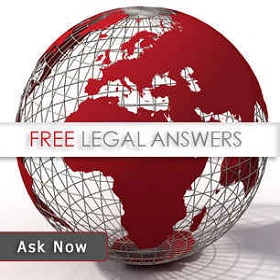
Software Patent Application, Filing and Software Idea Patent
The debate over software patentability continues to rage, without any clear resolution in sight, after at least four decades of controversy. The debate over software patentability has tended to focus, quite reasonably, on the threshold subject matter patentability requirement, which specifies the kind of subject matter that is susceptible to patent protection. The patentable subject matter requirements is an attempt to provide a mechanism for filtering out claimed subject matter that does not fall within the useful arts (in the USA) or the industrial arts (in Europe). Failure to satisfy the patentable subject matter requirement is fatal to the ultimate determination of patentability more generally. A poem for example, is not patentable subject matter and therefore not patentable, no matter how novel it may be and no matter how significant an advance it represents over the current state of the literary art.
The US patent statute adopts a categorical approach to patentable subject matter according to which five categories of subject matter- process, machines, articles of manufacture, and compositions of matter are susceptible to patent protection. The European Patent Convention takes an approach which is at one more expansive and more limiting, by requiring that inventions be susceptible of industrial application rather than providing a list of specified categories as the fundamental test for patentable subject matter, while also providing a list of expressly excluded categories. Although this express exclusion includes computer programs, computer programs are only excluded.
In most cases, the question, is software patentable? is best interpreted as the questions is software patentable subject matter? Although other requirements, such as the novelty and inventive step no obviousness requirements, have also engendered controversy in their application to software, the crux of the debates has been and continues to be whether computer programs as a class should be susceptible to patent protection in the first instance.
For example, Samuelson et al. attempted to provide a comprehensive analysis of and recommendations for the legal protection of computer programs. The Manifesto, which resulted from a collaboration of two law professors, a software entrepreneur, and a computer science professor, was the centerpiece of a symposium on the topic of legal protection for computer programs. The Manifesto advanced the debate on legal protection for software in several ways and continues to serve as an anchor point today. The authors of the Manifesto were among the first to attempt to identify unique characteristics of software in several ways and continues to serve as an anchor point today. The authors of the Manifesto were among the first to attempt to identify unique characteristics of software that might make it a poor fit for traditional forms of intellectual property protection. Furthermore, unlike many analyses which came before, the Manifesto returned to the first principles of intellectual property law rather than accepting as invisible the existing paradigms of patent, copyright, and trade secret.
Prior to the Manifesto, much attention had been paid to the fact that computer programs are a kind of text. The manifesto, while accepting that computer programs are texts, pointed out that programs also behave, and that such behavior is an essential part of what programs are. The manifesto concluded that this and other peculiar features of computer programs, such as the fact that innovation in software is largely incremented and cumulative in character, made existing intellectual property regimes poor suited to protect software. The Manifesto recommended the adoption of a sui generis market-oriented protection regime, which would provide innovators with an artificial market lead time sufficient to protect against marker failure. The intent of such a system was to provide sufficient incentives to innovators to disclosure their innovations to the public and thereby to advance the intellectual property system's fundamental policy of promoting progress of science and useful arts.
Despite the Manifesto's rejection of patent law as an appropriate mechanism for protecting computer programs, patent law arguably has surpassed copyright law as the primary source of protection for software in USA and has gained significance ground elsewhere in the years since the Manifesto's publication. Furthermore, the Manifesto's proposed sui generis protection regime has not been adopted. Although the principles expressed in the Manifesto may still be useful in shaping the contours of the patent system, the broader program advocated by the Manifesto has no practical prospect of adoption at present.
More fundamentally, the Manifesto failed to address a theoretical problem that has been brought to the forefront by software patent cases in recent years. Although the Manifesto correctly pointed out that programs behave and are kid of machine, the Manifesto did not attempt to distinguish between different kinds of behavior or machines. Existing software patent precedent, however, appears to establish that certain kinds of programs quality as patentable subject matter while other kinds do not depending on their behavior. The Manifesto fails to provide the theoretical tools needed to evaluate or refine such distinctions based on behavior. New tools, therefore, are not needed.
The failure of Existing Standards
The current state of the law of software subject matter patentability, both in the USA and Europe, leaves much to be desired, particularly considering the volume of link that has been spilled in consideration of the topic. In particular, although some consensus has been reached that software can qualify as patentable subject matter under certain conditions, we lack clear and objective definitions of such conditions, and therefore lack the means to determine whether any particular software patent claim defines patentable subject matter. For example, although a computer program that merely performs a mathematical calculation lacking any practical application does not qualify as patentable subject matter, while software that controls an automobile-manufacturing robot likely qualifies as patentable subject matter, even such conclusions are less certain than is desirable and leave a substantial grey area in between.
Get Patent for your Software from us- Contact







